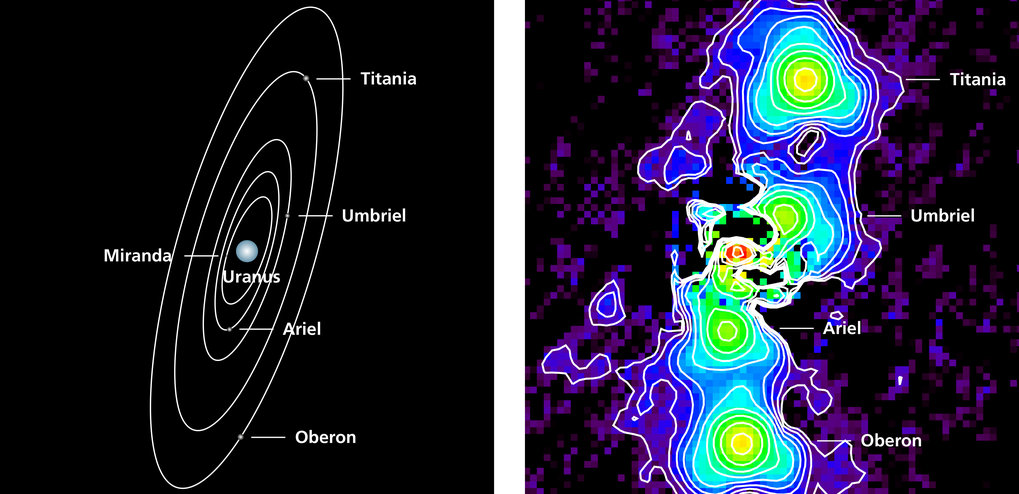MPIA: Herschel and the Uranian Moons
Posted: Mon Sep 14, 2020 3:59 pm
Herschel and the Uranian Moons
Max Planck Institute for Astronomy | Max Planck Society | 2020 Sep 14
Herschel-PACS Photometry of the Five Major Moons of Uranus ~ Ö. H. Detre et al
Uranian Satellite Formation by Evolution of a
Water Vapor Disk Generated by a Giant Impact ~ Shigeru Ida et al
Max Planck Institute for Astronomy | Max Planck Society | 2020 Sep 14
Observations with the Herschel Space Observatory reveal the composition of the largest Uranian moons
More than 230 years ago astronomer William Herschel discovered the planet Uranus and two of its moons. Using the Herschel Space Observatory, a group of astronomers led by Örs H. Detre of the Max Planck Institute for Astronomy now has succeeded in determining physical properties of the five main moons of Uranus. The measured infrared radiation, which is generated by the Sun heating their surfaces, suggests that these moons resemble dwarf planets like Pluto. The team developed a new analysis technique that extracted the faint signals from the moons next to Uranus, which is more than a thousand times brighter. ...
- The images show the position of the five largest Uranian moons and their orbits around Uranus on 12 July 2011 as seen by Herschel. Left: Calculated positions and orbits of the moons. The left side of the orbital plane is pointing towards us. The size of the objects is not shown to scale. Right: False-colour map of the infrared brightness at a wavelength of 70 µm after removal of the signal from the planet Uranus, measured with the PACS instrument of the Herschel Space Observatory. The characteristic shape of the signals, which resembles a three-leaf clover, is an artifact generated by the telescope. Credit: T. Müller (HdA)/Ö. H. Detre et al./MPIA
To explore the outer regions of the Solar System, space probes such as Voyager 1 and 2, Cassini-Huygens and New Horizons were sent on long expeditions. Now a German-Hungarian research group ... shows that with the appropriate technology and ingenuity, interesting results can also be achieved with observations from far away.
The scientists used data from the Herschel Space Observatory ... The discovery of the moons in the Herschel data was a coincidence ...
Herschel-PACS Photometry of the Five Major Moons of Uranus ~ Ö. H. Detre et al
- Astronomy & Astrophysics 641:A76 (Sep 2020) DOI: 10.1051/0004-6361/202037625
- arXiv.org > astro-ph > arXiv:2006.09795 > 17 Jun 2020 (v1), 29 Jul 2020 (v2)
Uranian Satellite Formation by Evolution of a
Water Vapor Disk Generated by a Giant Impact ~ Shigeru Ida et al
- Nature Astronomy 4(9):880 (Sep 2020) DOI: 10.1038/s41550-020-1049-8
- arXiv.org > astro-ph > arXiv:2003.13582 > 30 Mar 2020
